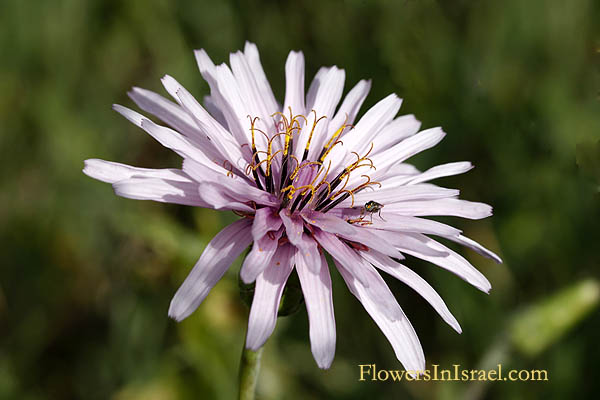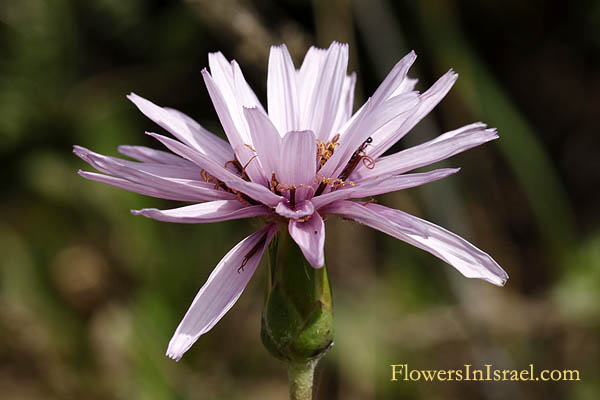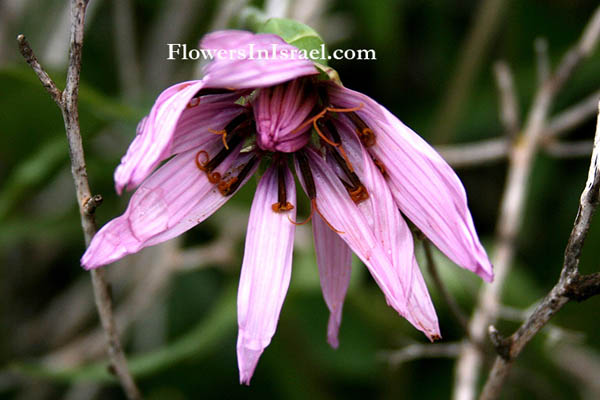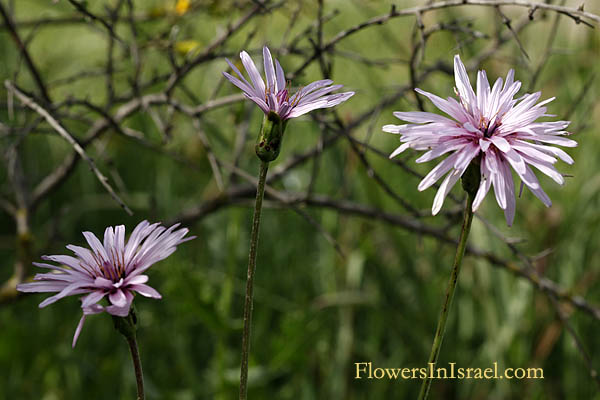Hebrew: הרדופנין הציצית, Arabic: ربحلة – حبردول – ربحلي
| Scientific name: | Scorzonera papposa DC. | |
| Common name: | Oriental Viper's Grass | |
| Hebrew name: | הרדופנין הציצית | |
| Arabic name: | ربحلة – حبردول – ربحلي | |
| Plant Family: | Compositae / Asteraceae, מורכבים |

Location: Bene Zion Nature Reserve |
| Life form: | Hemicryptophyte | |
| Stems: | 10-40 cm tall, usually branched from base, leafy | |
| Leaves: | Alternate, rosette, entire | |
| Inflorescence: | Heads liguliflorous, large, 1–many | |
| Flowers: | Pink | |
| Fruits / pods: | Achenes 6-8 mm long, soft, white hairy | |
| Flowering Period: | March, April, May | |
| Habitat: | Batha, Phrygana | |
| Distribution: | Mediterranean Woodlands and Shrublands, Semi-steppe shrublands, Shrub-steppes, Deserts and extreme deserts, Montane vegetation of Mt. Hermon | |
| Chorotype, טיפוס התפוצה: | Irano-Turanian | |
| Summer shedding: | Ephemeral |

Location: Bene Zion Nature Reserve Derivation of the botanical name: Scorzonera, from Old French scorzon, a snake; possibly from the use of its root as a cure for snakebite. papposa, from the Latin for "with pappus." The Hebrew name: הרדופנין, hardophnin [Post Biblical Hebrew] Scorzonera, from Greek rododaphne; from rodon (=rose) and daphne (=laurel).


Location: Bene Zion Nature Reserve |